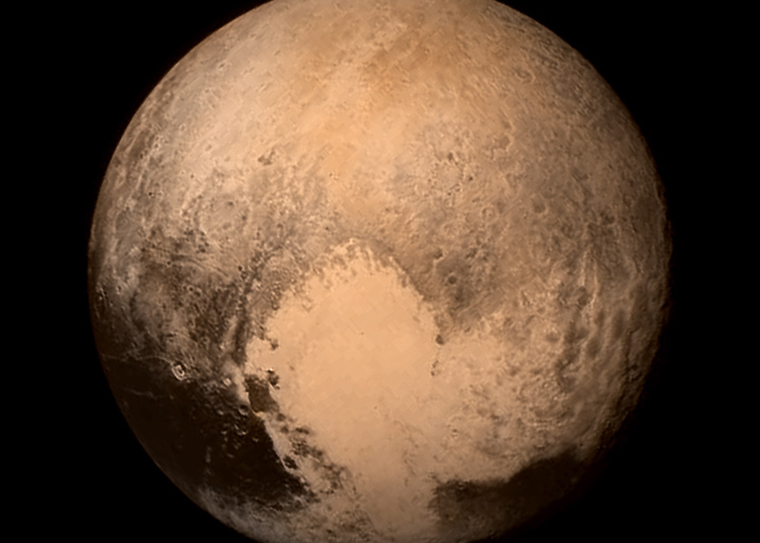
An ocean of liquid water deep beneath the icy surface of Pluto is coming into focus thanks to new calculations by Alex Nguyen, a graduate student in earth, environmental and planetary sciences in Arts & Sciences at Washington University in St. Louis.
In a paper published in the journal Icarus, Nguyen used mathematical models and images from the New Horizons spacecraft that passed by Pluto in 2015 to take a closer look at the ocean that likely covers the planet beneath a thick shell of nitrogen, methane and water ice.

Patrick McGovern of the Lunar and Planetary Institute in Houston was a co-author of the paper.
For many decades, planetary scientists assumed that Pluto could not support an ocean. The surface temperature is about -220 C, a temperature so cold even gases like nitrogen and methane freeze solid. Water shouldn't have a chance.
"Pluto is a small body," said Nguyen, who is conducting his PhD research at Washington University as an Olin Chancellor's Fellow and a National Science Foundation Graduate Research Fellow. "It should have lost almost all of its heat shortly after it was formed, so basic calculations would suggest that it's frozen solid to its core."
But in recent years, prominent scientists including William B. McKinnon, a professor of earth, environmental and planetary science in Arts & Sciences, have gathered evidence suggesting Pluto likely contains an ocean of liquid water beneath the ice. That inference came from several lines of evidence, including Pluto's cryovolcanoes that spew ice and water vapor. Although there is still some debate, "it's now generally accepted that Pluto has an ocean," Nguyen said.
The new study probes the ocean in greater detail, even if it's far too deep below the ice for scientists to ever see. Nguyen and McGovern created mathematical models to explain the cracks and bulges in the ice covering Pluto's Sputnik Platina Basin, the site of a meteor collision billions of years ago. Their calculations suggest the ocean in this area exists beneath a shell of water ice 40 to 80 km thick, a blanket of protection that likely keeps the inner ocean from freezing solid.
They also calculated the likely density or salinity of the ocean based on the fractures in the ice above. They estimate Pluto's ocean is, at most, about 8% denser than seawater on Earth, or roughly the same as Utah's Great Salt Lake. If you could somehow get to Pluto's ocean, you could effortlessly float.
As Nguyen explained, that level of density would explain the abundance of fractures seen on the surface. If the ocean was significantly less dense, the ice shell would collapse, creating many more fractures than actually observed. If the ocean was much denser, there would be fewer fractures. "We estimated a sort of Goldilocks zone where the density and shell thickness is just right," he said.
Space agencies have no plans to return to Pluto any time soon, so many of its mysteries will remain for future generations of researchers. Whether it's called a planet, a planetoid, or merely one of many objects in the outer reaches of the solar system, it's worth studying, Nguyen said. "From my perspective, it's a planet."
Originally published on the Ampersand website






